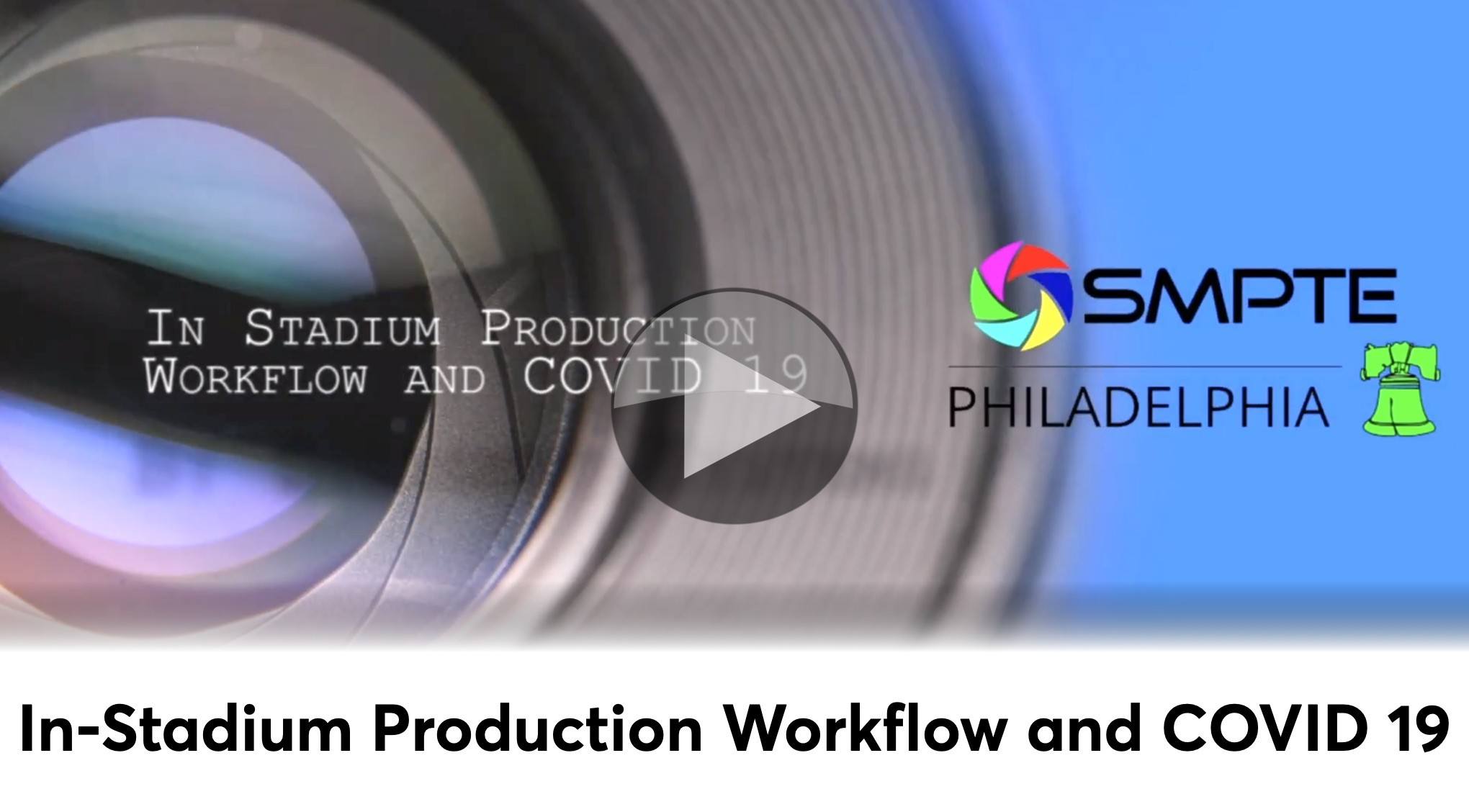As COVID-19 has wrought many changes to society, this webinar looks to see how it’s changed the way live sports is produced by the in-stadium crews producing the TV shows the cover the ups and downs of our beloved teams. We know that crews have had to be creative, but what has that actually looked like and has it all been negative?
The SMPTE Philadelphia section first invites Martin Otremsky to talk about how his work within the MLB has changed. Before the beginning of the season, Martin and team weren’t allowed in the stadium and had very little notice of the first game for which they were allowed to prepare.
Crowd noise was a big issue. Not only was the concern that the players would find it offputting in a silent stadium, but it was soon realised that swearing and tactics chat could easily be heard by other players and the mics. Bringing back crowd noise helped mask that and allow the teams to talk normally.
The crowd noise was run off three iPads. One which ran a 3-hour loop of general crowd noise and then two which had touch screen buttons to trigger different types/moods of effects dealing with the noises of anticipation and reactions, when the crowd would be at ease and when they would be ‘pumped’. This was run on the fly by two operators who would keep this going throughout the game. The crowd noise required a fair bit of fine-tuning including getting the in-stadium acoustics right as the speaker system is set up to assume the stands are lined with absorbent people; without a crowd, the acoustics are much more echoey.
The Covid protections dealt with people in 3 tiers. Tier 1 was for the players and coaches all of whom were tested every 48 hours and where they would need to be. Tier 3 was for people who could go everywhere not in Tier 1. Tier 2 was one or two people who were allowed in both but under extreme restrictions. As such the crew in Tier 3 found it hard to do a lot of maintenance/configuration in certain places as they had to leave every time Tier 1 staff needed to be in the area.
The operation itself had been pared down from 28 to 9 people which was partly achieved by simplifying the programme itself. The ballpark often had to be flipped to accommodate another team using it as their ‘home’ stadium which caused a lot of work as graphics would have to be reworked to fit the in-stadium graphics boards. Crowd noise would have to cheer for a different team and the video & production graphics had to be swapped out. Matin ends his presentation with a Q&A session.
Next up is Carl Mandell for the Philadelphia Union football/soccer team. They had been lucky enough to be at the end of a stadium technical refresh of their LED displays and their control room, moving up to 1080p60 HDR. Alas, the COVID restrictions hit just before the home opener, robbing them of the chance to use all the new equipment. Their new cameras, for instance, remained unused until right near the end of the season.
Unlike the MLB, Carl explains they didn’t choose to do crowd audio in the stadium itself. They ran virtual graphics to fulfil contractual obligations and to brighten up the relatively empty stadium. Unlike MLB, they were able to have a limited crowd in the stadium during most matches.
For the crowd noise used in the broadcast programme, they used audio taken from their ten-year archive of previous games and allowed the chants and reactions to be under the control of fans.
One COVID success was moving the press conferences on Zoom. Whilst the spokesperson/people were actually in the stadium with a PTZ camera in front of them and an 85″ TV to the side, all the media were brought in on Zoom. Carl says they found that this format produced much more engaging conferences which increased their international appeal and raised the viewership of the press conferences.
Watch now!
Speakers
 |
Carl Mandell Director, Broadcasting & Video Production Philadelphia Union |
 |
Martin Otremsky Director of Video Engineering, Philadelphia Phillies |


